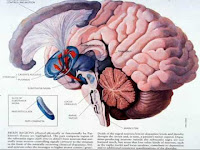The evolution of Parkinson's disease
Nevertheless, it is inexorable worsening and is characterized by survival times ranging from 10 to 15 years. This survival is longer in younger patients than in older patients. The evolution is in some percentage of cases to dementia (severe irreversible alteration of the mind and mental faculties) over five years. It starts with small tremors at rest, then the patient gradually progresses to a bedridden state that requires him to stay in bed.
Infectious skin problems and enamel come this evolution, combining slurred speech and swallowing becomes increasingly difficult.
Insidiously, depression sets in, accompanied by memory problems, confusion and dementia (memory loss). These psychological manifestations may be associated with episodes of delusions (of persecution) and confusion, which require an investment. This type of psychiatric symptoms affected about 10 to 15% of Parkinson's disease. Usually, their evolution is supported by a treatment with neuroleptic drugs (psychotropic). Unfortunately, neuroleptics aggravating parkinsonism, treatment of the psychotic manifestations is difficult in this case.
However, it is possible to propose an evolution based on the response to treatment with dopamine. Professor Peter Pollack, professor of neurology and CHU de Grenoble, individualizes three groups of patients in this case.
For the first group, about 15% of patients, treatment with dopamine results in no positive effect. There is even in this type of patient the disease worsens fairly quickly. We reserve for those individuals diagnosed with parkinsonism more. These patients are characterized by the appearance of signs on both sides of the body symmetrically while tremor usually present in PD patients classic is absent.
The second group, according to Professor Pollack is also composed of 15% of patients and is characterized by a dramatic response to levodopa. Healing seems to come as if by magic but hides the appearance of complications on the motor, complications occurring more rapidly and related to treatment with dopamine.
The third group represents about 70% of patients between the two. For these patients, treatment with dopamine is relatively effective, but patients develop side effects known as dopa-dependent and, which are: intellectual disability, difficulty speaking, imbalance, orthostatic hypotension (recall that is a drop in blood pressure when the patient moves from lying to sit or standing) and urinary problems. Among these patients, those for whom tremor is the predominant symptom, the evolution of the disease appears more benign. Other patients in this group have what neurologists call a form akineto rigid, that is to say, that their symptoms are primarily rigidity and difficulty performing movements. These patients seem to have been less favorable than others.
Complications are mainly the occurrence of bedsores and pneumonia due to malfunction of the autonomic nervous system among others (autonomic dysregulation).
Mental changes, which are usually the result of treatment, lead to depression and social isolation.
At an advanced stage, the mental confusion and dementia, which rarely occur, worsen the social situation.
Alerts: If you want to know more fresh update helpful articles enter your email address below and be notified by mail.









